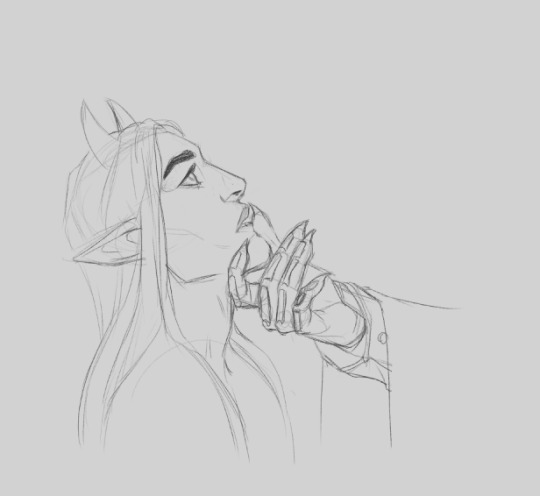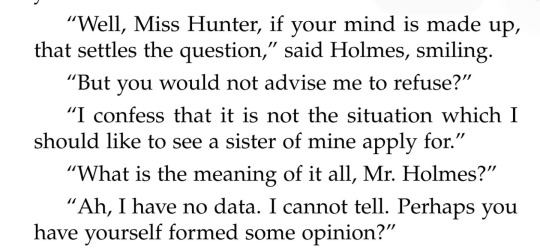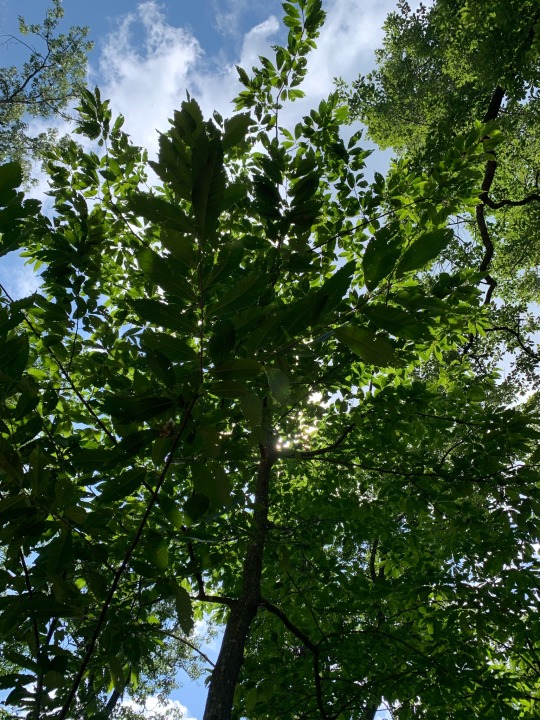#yes beech
Text

WIP // Hey, don't tell anyone but
#I FORGOT!!! HIS NECKLACE!!!!!!!! GRRR BARK BARK GRRR#note to self: Add Dew's cross#Yes I do want to point this some day#my brain is scrambled eggs right now tho :'/#it's gonna be for a week and a half#and I got out patient surgery on the 27th so I'm scrimble scromble#Crohn's disease you're a beech :/#anyway I'm suffering <3 But Dewdrop is SO PRETTY#I REGRET THE POSITION OF HIS HORNS EVEN IF THEY'RE CUTE THO!#ghcstcd
447 notes
·
View notes
Text









When they're domestic it actually kills me.
#The way he is me#Jab Harry Met Sejal#Beech Beech Mein#Sejal Zaveri#Harinder 'Harry' Singh#Yes thank you I WILL continue to think about them#Pix's pics
38 notes
·
View notes
Text
my mind for 2024: "you'll change yourself. you'll isolate and work your ass off."
also me for entire jan: "dwaa khao-so jao-utho-phir dwaa khao-phir so jao"
bhenchod *phoding my sir in silence"
#bc kya ho rha mere saath ye#yaa toh maar hi do ya phir jee hi lene do#ye kya hota ki beech me latka ke chhod diya hai#aise thode hi hota hai bkl#desi tumblr#desiblr#desitumblr#desi culture#desi humor#desi memes#being desi#desi academia#desi posts#desi problems#desi people#desi drama#total drama#dukhblr#dukh dard peeda#desi shit posting#tumblr dump#tumblr shit posting#random shit
27 notes
·
View notes
Text
I've discovered a new way to instantly anger me and its to read other people's top ten Sherlock Holmes short stories lists. They praise terrible stories and piss on bangers. I need to chew through something.
#why does everyone like silver blaze#I found it utterly boring#also yes yes copper beeches has a jane eyre feel to it but the whole story is also bizarre and uncomfy#lbr LOTS of holmes is racist and dated and uncomfortable#i can note the inherent racism of speckled band and still enjoy the tension of the story#redheaded league also... fun but hardly a fav#also whys everyone praising final problem and not empty house#final problem is just watson talking about holmes talking about moriatry#fine for Lore Reasons but as a story?? a lil meh#Empty House fucks severely I love it so much
9 notes
·
View notes
Text

this year's art summary!!!
looking hella good
#art summary#2023 art summary#summary of art#2023 summary of art#artists on tumblr#my art#my artwork#fanart#original art#yes beech finally enough art for a summary
4 notes
·
View notes
Text
In Other News:
I got bored at work and spent two hours crafting a Concealed Carry for a chicken. A real chicken.

#and that’s on adhd#adobe express#dope editing program#yes i printed it off#and ofc it was chicken sized#and i laminated that beech
10 notes
·
View notes
Text
brits: hey can we just take trains from the east to the west without going through londo-
the train companies:

#personal crap#my hatred of private train operators in britain is so vast it gets into stuff that's not even technically their fault#like yes i know this is because doctor beeching totally fucked the railway system up in the 60s#because cars go brr but you people overcharge me to go via london to get anywhere west of peterborough#which isn't on the birmingham or liverpool lines#I'm getting pretty specific now lol
3 notes
·
View notes
Note
Tani Tani Tani Taniiii
Arre ramennnn hello helloo
Kaisa hai
9 notes
·
View notes
Text
i helped my little cousin sister solve so many sums hello i love being an elder sister for once
#i can't help bhai with anything he's in totally different field#but this cousin from mumbai shes giving her exams yahan se cause better centres and yahan function tha#exam ke beech#and kal maths logical reasoning hai and maat sum tha east west north south ke baare mein#and maine usse pura live reenact karke bataya ki usse samajh bhi aa gaya aur itni hasi aayi#kitna accha laga na🥹 like i remember every exam se pehle meri didi meko aise padhati thi just hang out with me for hours#and i used to think she's god for it sab aata tha na unhe maths physics chem logarithms differentiation#im so happy and excited i hope wou pass ho jaye she failed ek baar and ik how that feels very much😭#fir i could help her eco mein bhi and inter mein bhi and final mein bhi like omg isn't it amazing#you'll always be your kids ke older sister the gap will never be bridged like isn't that so comforting#idk feelings weirdly emotional today😭#this guy from office aaj kuch kuch ho gaya and i think he was crying??? like kyunki usse daat padi??#baat nahi ho payi sab bohot busy the so i texted office ke during hi ki tu theek hai na#he just said haha with cry emoji i said arey ye kya hota hai and kuch bhi vent karna ho toh#meko 'im here' bolne mein bohot ajeeb lag raha tha kyunki aise type ka relationship nahi hai we're always joking teasing calling#eo annoying#so maine bas likh diya 'you know'#so he said haan thank you yaar🥹#🥹<- YE EMOJI KE SAATH#like crush ye sab thik hai door ki baat hai but i know there were days when i was on the verge of crying there and then bc too much#pressure and i felt alone and usse meri shakal dekhke samajh aa jata tha he asked kya hua all good?#and like kabhi kabhi just the 👍? aise action karta tha and i would be like nod and 👍#so just. pata nahi bohot hi bura lag raha hai soch ke ki he's feeling so bad and he isn't saying anything to me#pata nahi yaar ladko mein samajh nahi aata 😓 ladki hoti toh ek hug pakka offer kar deti#ALSO#didi chali gayi 😓 im happy for her kyunki diwali ke baad ab wapis jaane diya hai papa ne unki office wale sheher mein#but😭#i love her she's SO. meko chutte hai kya iss bahane room mein bulaya aur fit#2000 rupees thama diye hug karke happy birthday bola ye paise kisi ko nahi pata so isse jahan udane hai uda😭😭😭#because she can't be here na birthday ke liye😭😭😭😭😭😭
2 notes
·
View notes
Text

This is actually adorable, I really hope there is some form Violet Hunter in the manga because this is wholesome as heck!
#moriarty the patriot#yuukoku no moriarty manga#kit's path to memory lane#yes i was a sherlockian shh#source: adventure of the copper beeches#this kinda fuels my hc of a younger sister and he is nice to.her#one of my inspo for the sister in my story
4 notes
·
View notes
Text
Much love to any and all new followers that just go through my blog and go like pretty much all of my stuff!! Sometimes they bring back some old shenanigans to light and it makes me happy 💜💜 It brings a smile to my shitty days~

#sometimes I get WALLS of just one person liking pretty much the entirety - or most recent stuff - of my blog#and I'm like yes beech glad you enjoyed#this sustenance is for you mah child
13 notes
·
View notes
Text
Oki, so I haven't updated on Ao3 in a while but I have been quietly tinkering away at so many of my fics and it feels like today and tomorrow will be finishing day for many of them.
Should I update 3-5 stories in the span of one hour or should I do this more gradually? I don't know anymore 😖
The plight of having like 10+ stories in the brain all the time.
#katekyo hitman reborn#khr fanfic#yes the stories are Hibari and/or Skull-centric#I am that cloud beech#and I will post the links here too#khr hibari#khr skull
9 notes
·
View notes
Text
everytime i hear maange manzooriyan or think about the lyrics it makes me want to cry cause like,, !! yes, that's all we want, to be accepted and have permission to just,,, be. everything within us asking to be acknowledged and loved and allowed to fucking breathe, whether we're looking for it from ourselves or someone else. they're just such simple wishes and a lot of us still can't even have that, and the song does such a lovely job of expressing that.
#im about to cry while typing this actually#''teri meri saanson ki reshmi si yeh doriyan'' clenches fist#goddammit this is why badhaai do hit hard cause#soft and poetic and domestic queer love and just. we want to fucking exist peacefully :(#also the pause between ''teri meri beech ki'' before we're told its literallt just a distance of 2 steps makes it seem like so much more#the female ver hits different for me idk if its relatability or just maalavikas voice but <3333#badhaai do#yes im back on my badhaai do brainrot#maange manzooriyan#faera's
9 notes
·
View notes
Text
Sabhi ko shadi isse time pai kyun karni hai bhai? Aur ek mahina ruk jao na!
#just received 5th wedding invitation of the month#kya yaar exams ke beech mai ye log sab karte rhte hai
3 notes
·
View notes
Text
the searchbar is genuinely so funny to me

1 note
·
View note
Text
There, in the sunlit forest on a high ridgeline, was a tree I had never seen before.
I spend a lot of time looking at trees. I know my beech, sourwood, tulip poplar, sassafras and shagbark hickory. Appalachian forests have such a diverse tree community that for those who grew up in or around the ancient mountains, forests in other places feel curiously simple and flat.
Oaks: red, white, black, bur, scarlet, post, overcup, pin, chestnut, willow, chinkapin, and likely a few others I forgot. Shellbark, shagbark and pignut hickories. Sweetgum, serviceberry, hackberry, sycamore, holly, black walnut, white walnut, persimmon, Eastern redcedar, sugar maple, red maple, silver maple, striped maple, boxelder maple, black locust, stewartia, silverbell, Kentucky yellowwood, blackgum, black cherry, cucumber magnolia, umbrella magnolia, big-leaf magnolia, white pine, scrub pine, Eastern hemlock, redbud, flowering dogwood, yellow buckeye, white ash, witch hazel, pawpaw, linden, hornbeam, and I could continue, but y'all would never get free!
And yet, this tree is different.
We gather around the tree as though surrounding the feet of a prophet. Among the couple dozen of us, only a few are much younger than forty. Even one of the younger men, who smiles approvingly and compliments my sharp eye when I identify herbs along the trail, has gray streaking his beard. One older gentleman scales the steep ridge slowly, relying on a cane for support.
The older folks talk to us young folks with enthusiasm. They brighten when we can call plants and trees by name and list their virtues and importance. "You're right! That's Smilax." "Good eye!" "Do you know what this is?—Yes, Eupatorium, that's a pollinator's paradise." "Are you planning to study botany?"
The tree we have come to see is not like the tall and pillar-like oaks that surround us. It is still young, barely the diameter of a fence post. Its bark is gray and forms broad stripes like rivulets of water down smooth rock. Its smooth leaves are long, with thin pointed teeth along their edges. Some of the group carefully examine the bark down to the ground, but the tree is healthy and flourishing, for now.
This tree is among the last of its kind.
The wood of the American Chestnut was once used to craft both cradles and coffins, and thus it was known as the "cradle-to-grave tree." The tree that would hold you in entering this world and in leaving it would also sustain your body throughout your life: each tree produced a hundred pounds of edible nuts every winter, feeding humans and all the other creatures of the mountains. In the Appalachian Mountains, massive chestnut trees formed a third of the overstory of the forest, sometimes growing larger than six feet in diameter.
They are a keystone species, and this is my first time seeing one alive in the wild.
It's a sad story. But I have to tell you so you will understand.
At the turn of the 20th century, the chestnut trees of Appalachia were fundamental to life in this ecosystem, but something sinister had taken hold, accidentally imported from Asia. Cryphonectria parasitica is a pathogenic fungus that infects chestnut trees. It co-evolved with the Chinese chestnut, and therefore the Chinese chestnut is not bothered much by the fungus.
The American chestnut, unlike its Chinese sister, had no resistance whatsoever.
They showed us slides with photos of trees infected with the chestnut blight earlier. It looks like sickly orange insulation foam oozing through the bark of the trees. It looks like that orange powder that comes in boxes of Kraft mac and cheese. It looks wrong. It means death.
The chestnut plague was one of the worst ecological disasters ever to occur in this place—which is saying something. And almost no one is alive who remembers it. By the end of the 1940's, by the time my grandparents were born, approximately three to four billion American chestnut trees were dead.
The Queen of the Forest was functionally extinct. With her, at least seven moth species dependent on her as a host plant were lost forever, and no one knows how much else. She is a keystone species, and when the keystone that holds a structure in place is removed, everything falls.
Appalachia is still falling.
Now, in some places, mostly-dead trees tried to put up new sprouts. It was only a matter of time for those lingering sprouts of life.
But life, however weak, means hope.
I learned that once in a rare while, one of the surviving sprouts got lucky enough to successfully flower and produce a chestnut. And from that seed, a new tree could be grown. People searched for the still-living sprouts and gathered what few chestnuts could be produced, and began growing and breeding the trees.
Some people tried hybridizing American and Chinese chestnuts and then crossing the hybrids to produce purer American strains that might have some resistance to the disease. They did this for decades.
And yet, it wasn't enough. The hybrid trees were stronger, but not strong enough.
Extinction is inevitable. It's natural. There have been at least five mass extinctions in Earth's history, and the sixth is coming fast. Many people accepted that the American chestnut was gone forever. There had been an intensive breeding program, summoning all the natural forces of evolution to produce a tree that could survive the plague, and it wasn't enough.
This has happened to more species than can possibly be counted or mourned. And every species is forced to accept this reality.
Except one.
We are a difficult motherfucker of a species, aren't we? If every letter of the genome's book of life spelled doom for the Queen of the Forest, then we would write a new ending ourselves. Research teams worked to extract a gene from wheat and implant it in the American chestnut, in hopes of creating an American chestnut tree that could survive.
This project led to the Darling 58, the world's first genetically modified organism to be created for the purpose of release into the wild.
The Darling 58 chestnut is not immune, the presenters warned us. It does become infected with the blight. And some trees die. But some live.
And life means hope.
In isolated areas, some surviving American Chestnut trees have been discovered, most of them still very young. The researchers hope it is possible that some of these trees may have been spared not because of pure luck, but because they carry something in their genes that slows the blight in doing its deadly work, and that possibly this small bit of innate resistance can be shaped and combined with other efforts to create a tree that can live to grow old.
This long, desperate, multi-decade quest is what has brought us here. The tree before me is one such tree: a rare survivor. In this clearing, a number of other baby chestnut trees have been planted by human hands. They are hybrids of the Darling 58 and the best of the best Chinese/American hybrids. The little trees are as prepared for the blight as we can possibly make them at this time. It is still very possible that I will watch them die. Almost certainly, I will watch this tree die, the one that shades us with her young, stately limbs.
Some of the people standing around me are in their 70's or 80's, and yet, they have no memory of a world where the Queen of the Forest was at her full majesty. The oldest remember the haunting shapes of the colossal dead trees looming as if in silent judgment.
I am shaken by this realization. They will not live to see the baby trees grow old. The people who began the effort to save the American chestnut devoted decades of their lives to these little trees, knowing all the while they likely never would see them grow tall. Knowing they would not see the work finished. Knowing they wouldn't be able to be there to finish it. Knowing they wouldn't be certain if it could be finished.
When the work began, the technology to complete it did not exist. In the first decades after the great old trees were dead, genetic engineering was a fantasy.
But those that came before me had to imagine that there was some hope of a future. Hope set the foundation. Now that little spark of hope is a fragile flame, and the torch is being passed to the next generation.
When a keystone is removed, everything suffers. What happens when a keystone is put back into place? The caretakers of the American chestnut hope that when the Queen is restored, all of Appalachia will become more resilient and able to adapt to climate change.
Not only that, but this experiment in changing the course of evolution is teaching us lessons and skills that may be able to help us save other species.
It's just one tree—but it's never just one tree. It's a bear successfully raising cubs, chestnut bread being served at a Cherokee festival, carbon being removed from the atmosphere and returned to the Earth, a wealth of nectar being produced for pollinators, scientific insights into how to save a species from a deadly pathogen, a baby cradle being shaped in the skilled hands of an Appalachian crafter. It's everything.
Despair is individual; hope is an ecosystem. Despair is a wall that shuts out everything; hope is seeing through a crack in that wall and catching a glimpse of a single tree, and devoting your life to chiseling through the wall towards that tree, even if you know you will never reach it yourself.
An old man points to a shaft of light through the darkness we are both in, toward a crack in the wall. "Do you see it too?" he says. I look, and on the other side I see a young forest full of sunlight, with limber, pole-size chestnut trees growing toward the canopy among the old oaks and hickories. The chestnut trees are in bloom with fuzzy spikes of creamy white, and bumblebees heavy with pollen move among them. I tell the man what I see, and he smiles.
"When I was your age, that crack was so narrow, all I could see was a single little sapling on the forest floor," he says. "I've been chipping away at it all my life. Maybe your generation will be the one to finally reach the other side."
Hope is a great work that takes a lifetime. It is the hardest thing we are asked to do, and the most essential.
I am trying to show you a glimpse of the other side. Do you see it too?

#american chestnut#hope#climate change#biodiversity crisis#climate crisis#trees#plantarchy#learning to imagine the future
3K notes
·
View notes